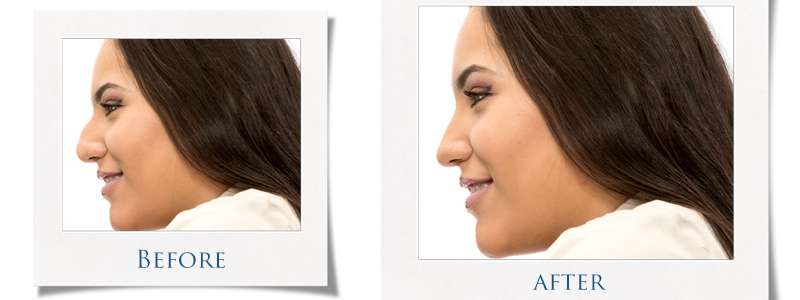Nose Surgery (Rhinoplasty)

Rhinoplasty, or nose surgery, is one of the most common plastic surgery procedures. During a rhinoplasty, the surgeon is able to reshape, reduce or augment a patient’s nose for cosmetic, and sometimes functional, purposes. A rhinoplasty may be performed to correct a birth defect, to repair an injury, to improve breathing or simply to improve a patient’s appearance.
Candidates for rhinoplasty should be at least 13 years old since it is important that patients have finished their facial growth before proceeding with this surgery. Patients considering rhinoplasty should be in overall good health, should not be smokers, and should have realistic expectations about the outcome. Rhinoplasty is usually an outpatient procedure performed under IV sedation or general anesthesia and takes from 1 to 2 hours. There are two methods for performing a rhinoplasty: open and closed. The surgeon will choose the appropriate procedure for each individual patient.
Immediately after surgery, the patient's nose and eyes are usually bruised and swollen. Splints and some packing material will remain inside the nose for a few days. Most patients feel like themselves within a few days and are able to return to regular activities in about a week. During recovery, the rhinoplasty patient should refrain from strenuous exercise and showering, use sunscreen of SPF 30 or higher and avoid nose blowing, vigorous toothbrushing or any activity that puts pressure on the nose.
As with any surgical procedure, there are risks involved in a rhinoplasty, including excessive bleeding, adverse reaction to anesthesia, and localized pain, discoloration or numbness. Occasionally, a patient may be dissatisfied with the cosmetic results of the operation and a second surgery, called a revision rhinoplasty, may be desired. For most patients, however, a rhinoplasty is an uncomplicated procedure with pleasing results.

Revision Rhinoplasty
Revision rhinoplasty, also known as secondary rhinoplasty, is a complex procedure to reshape or resize the nose after the initial procedure. This surgery is performed on patients who are dissatisfied with the aesthetic or functional results of the original procedure and seek additional corrective surgery. Reasons for dissatisfaction with the original procedure may include a complicated pre-surgical condition, an inexperienced surgeon or a faulty healing process. Because of its complexity, revision rhinoplasty requires the skills of a highly trained specialist.
Reasons for a Revision Rhinoplasty
Problems patients complain of after the initial rhinoplasty procedure may range from minor cosmetic imperfections to serious medical problems and may include:
- Nostril deformities
- Nasal bone fractures
- Cautery burns
- Septal tears
- Breathing difficulties
Our Surgeons Specializing in Rhinoplasty (Nose Surgery)

- Alvaro Testa Jr., MD, FACS
- Reconstructive & Plastic Surgeon
- Gilbert & Mesa
- Learn More

